Abstract
1. Hyaluronate extracted from rooster comb was digested by a mixture of beta-N-acetylhexosaminidase and beta-glucuronidase with simultaneous dialysis for 96 h. 2. The produjct, yielding 99.6% of a mixture of mono- and oligo-saccharides, was purified by gel chromatography and analysed for glucuronic acid, N-acetylglucosamine and other sugars. 3. The oligosaccharide portion was chromatographed on DEAE-cellulose, and the effluent fractions were analysed for glucuronic acid and N-acetylglucosamine, reduced with NaBH4, digested by beta-N-acetylhexosaminidase and subjected to acid hydrolysis and glucosamine determination. 4. GlcNAc-GlcA-GlcNAc, GlcA-GlcA-GlcNAc and GlcA-GlcA-GlcA-GlcNAc were the oligosaccharides obtained, which resulted from the transferase activity of the enzymes and represented 57% of the digestion products. The results demonstrate that this hyaluronate is an unbranched polymer of approximatey equal amounts of glucuronic acid and N-acetylglucosamine. The data also indicate that if this glycosaminoglycan contains any of the neutral sugars for which it was analysed, their concentration must be less than 0.020% of the sum of the known components.
Full text
PDF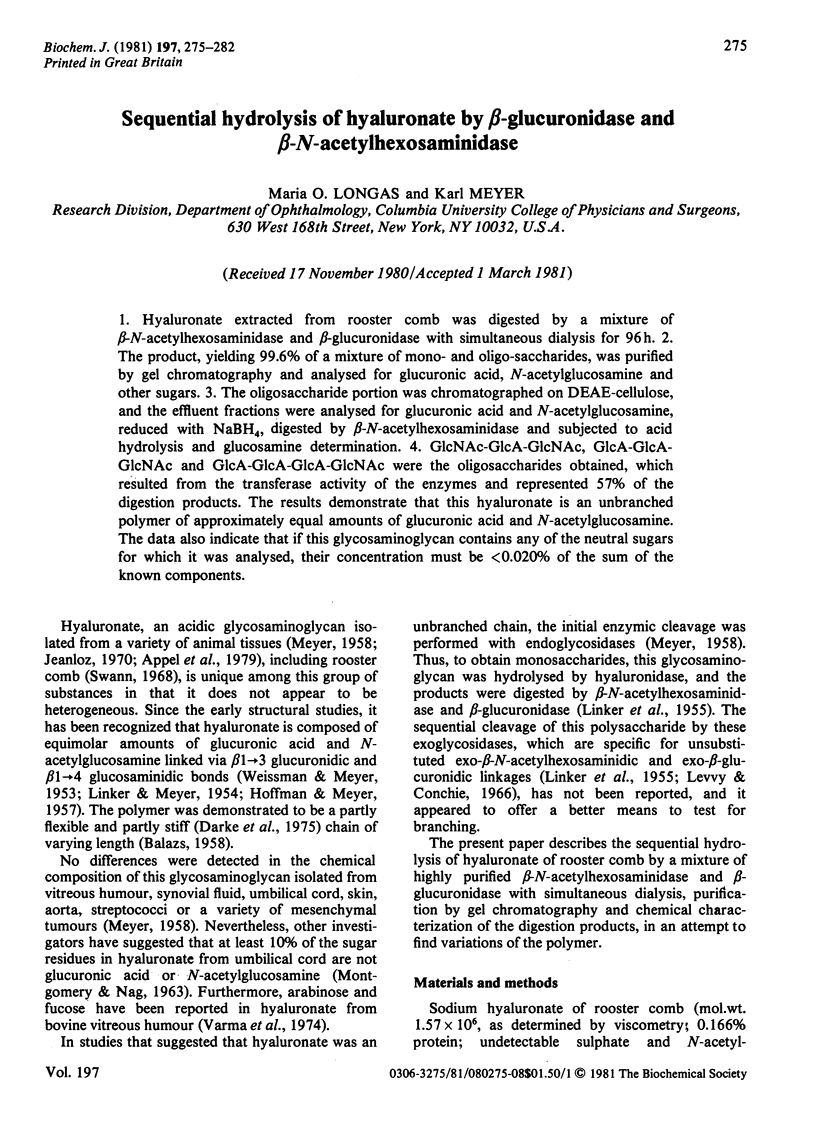
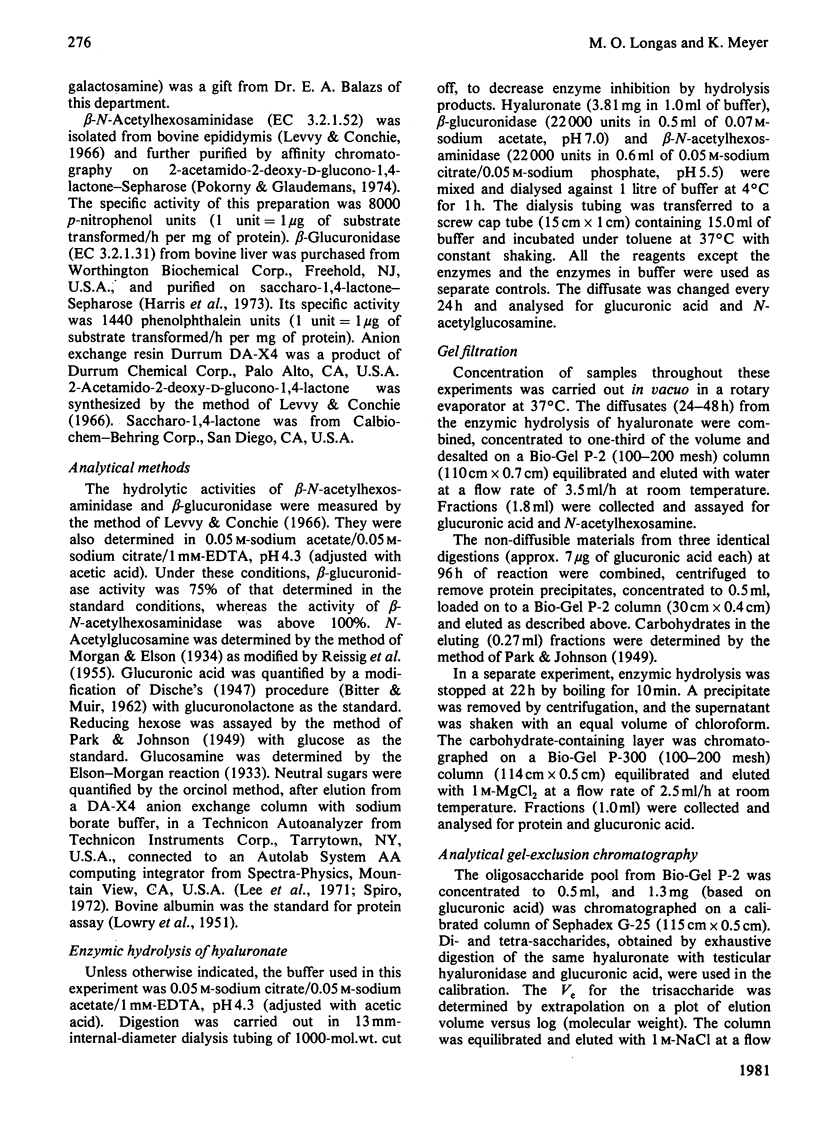
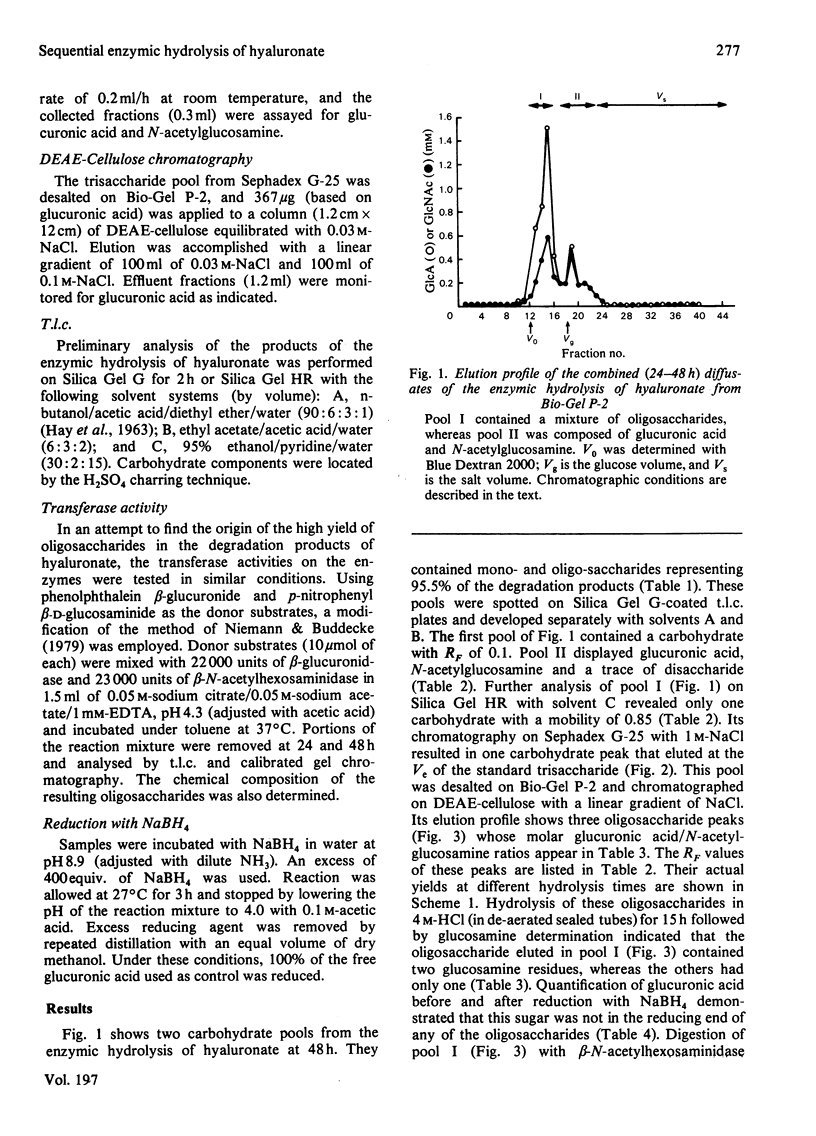
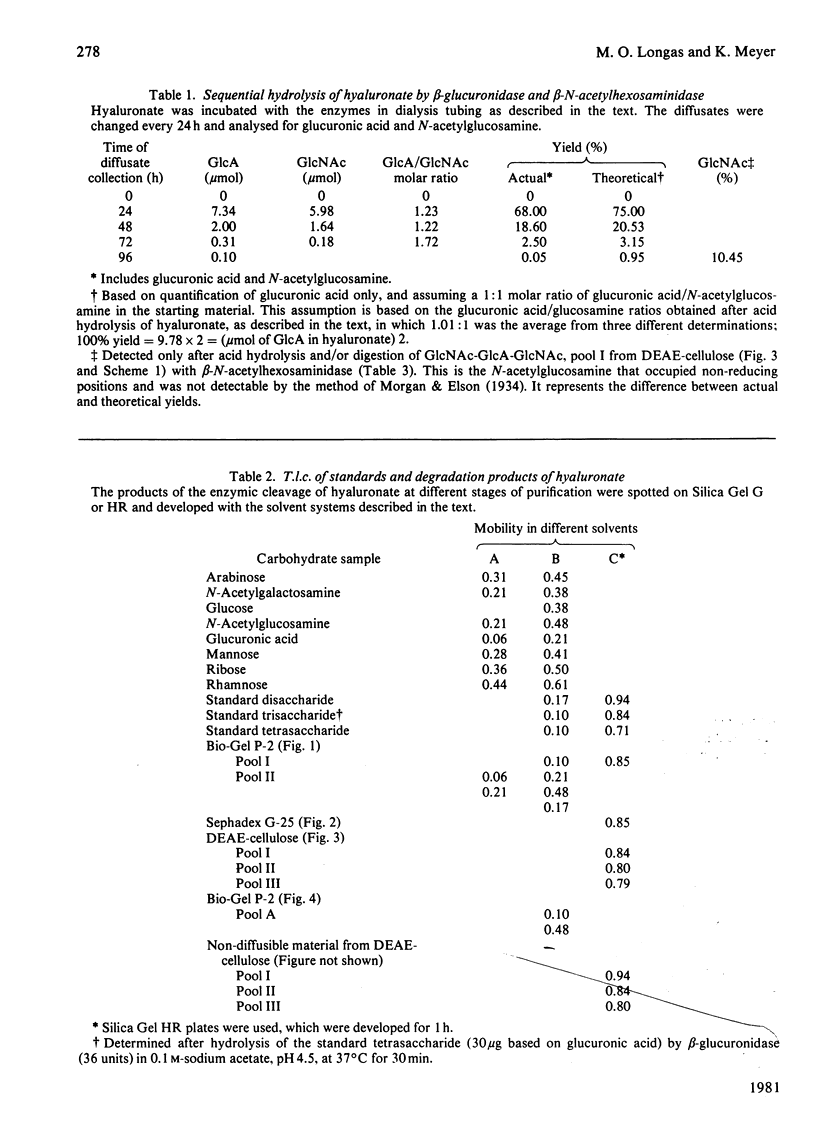
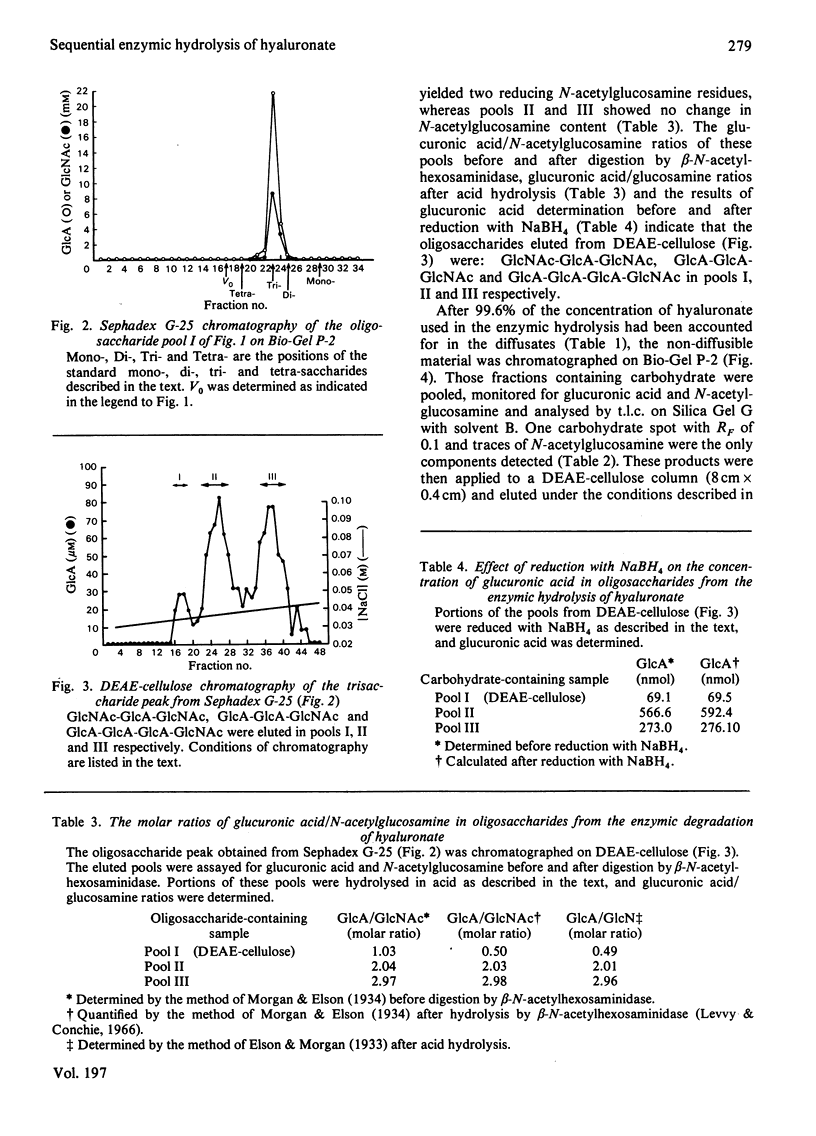
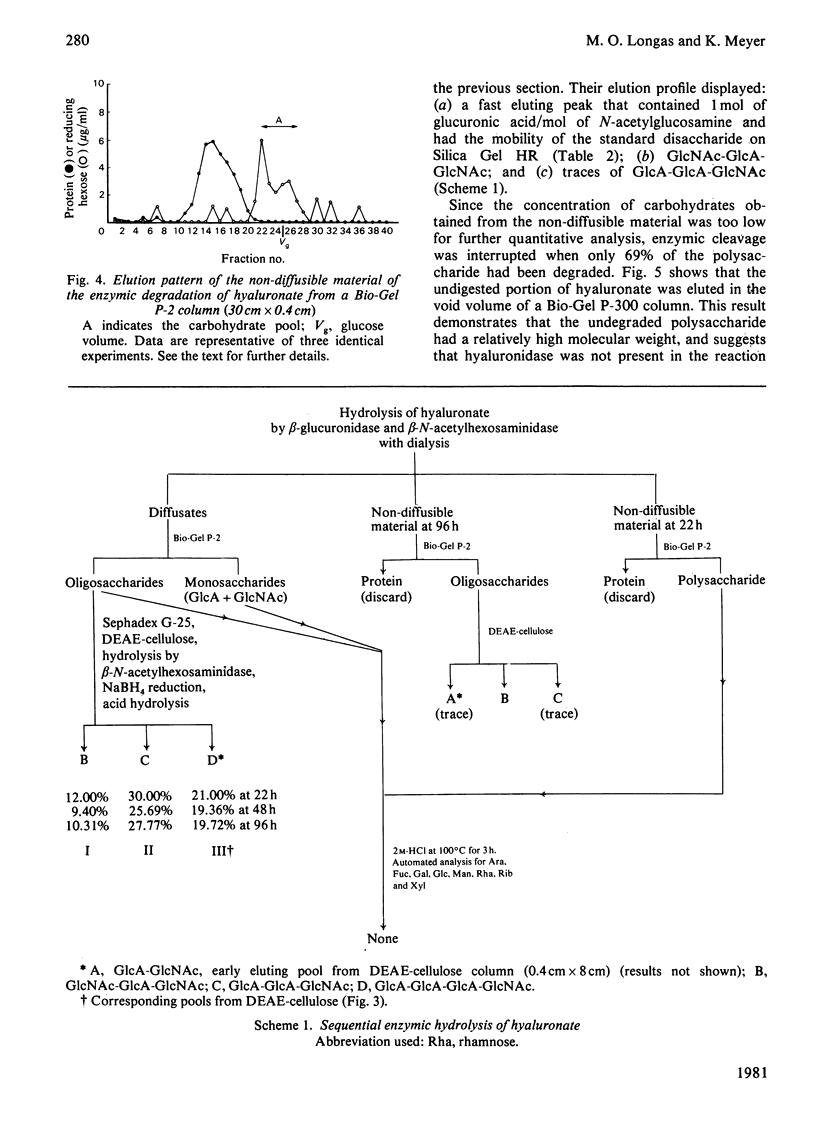
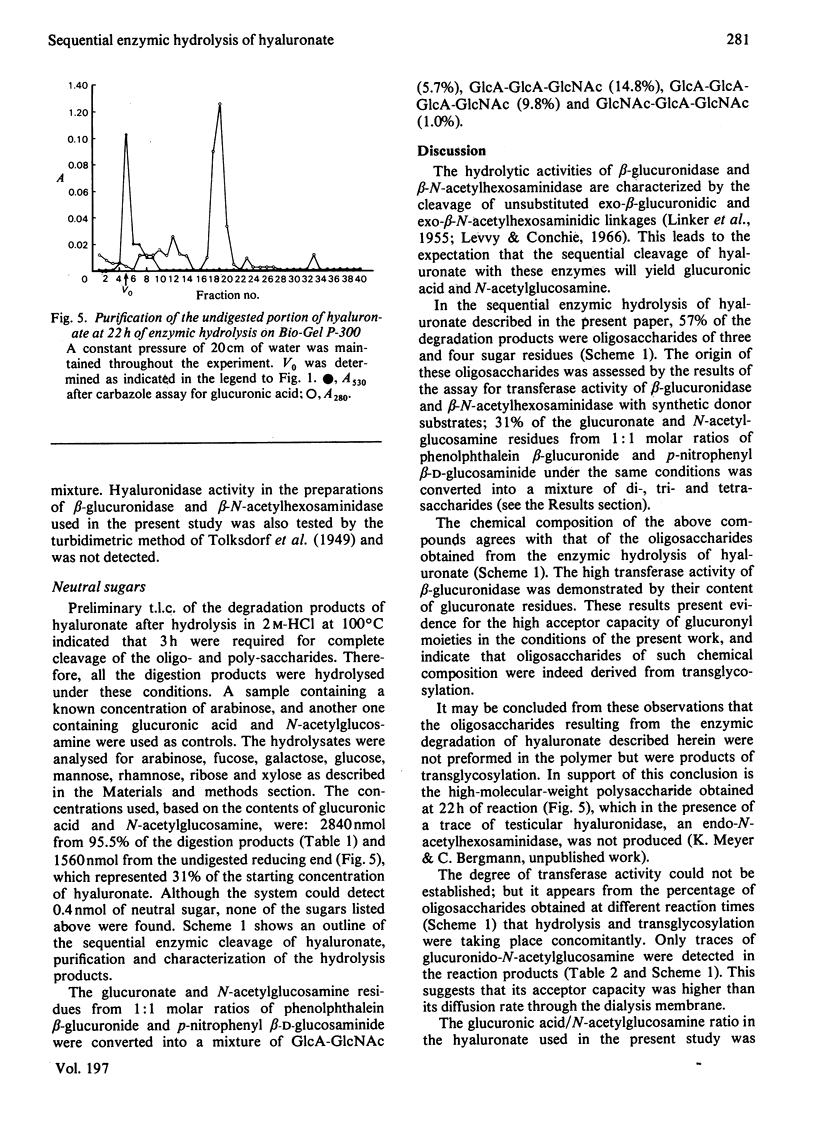
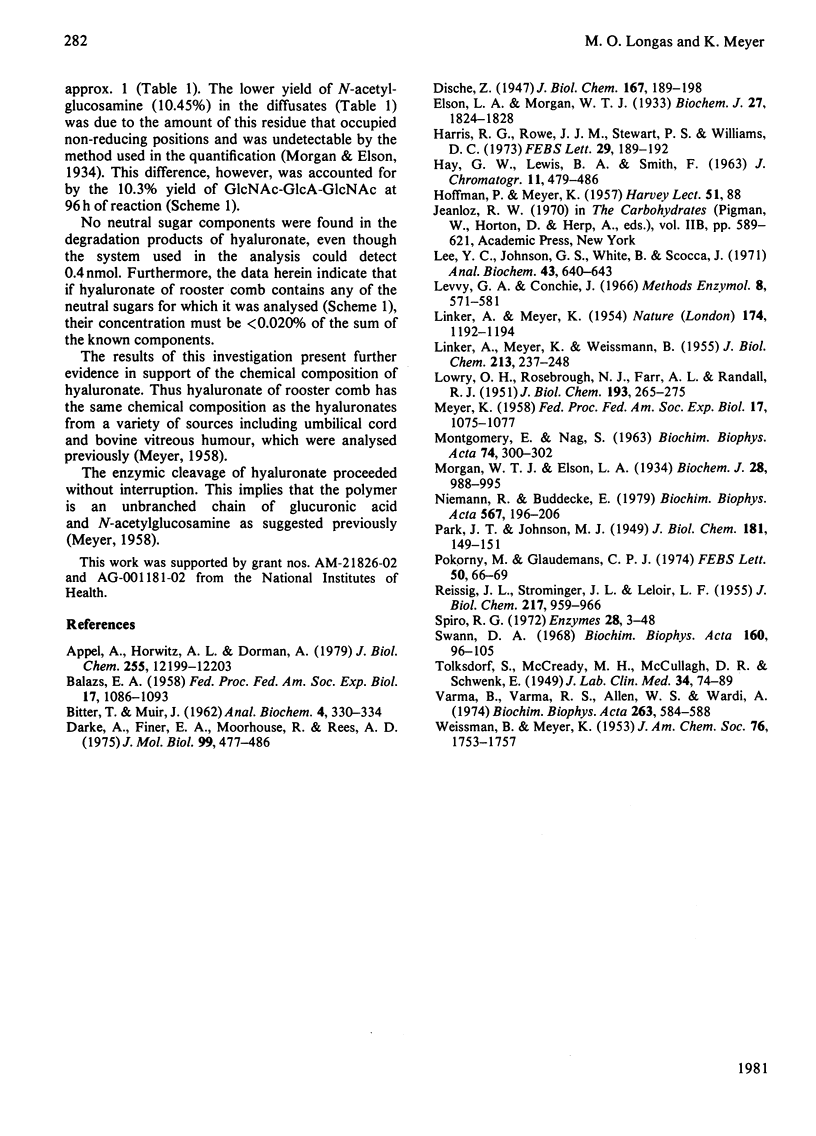
Selected References
These references are in PubMed. This may not be the complete list of references from this article.
- Appel A., Horwitz A. L., Dorfman A. Cell-free synthesis of hyaluronic acid in Marfan syndrome. J Biol Chem. 1979 Dec 10;254(23):12199–12203. [PubMed] [Google Scholar]
- BALAZS E. A. Physical chemistry of hyaluronic acid. Fed Proc. 1958 Dec;17(4):1086–1093. [PubMed] [Google Scholar]
- BITTER T., MUIR H. M. A modified uronic acid carbazole reaction. Anal Biochem. 1962 Oct;4:330–334. doi: 10.1016/0003-2697(62)90095-7. [DOI] [PubMed] [Google Scholar]
- Darke A., Finer E. G., Moorhouse R., Rees D. A. Studies of hyaluronate solutions by nuclear magnetic relaxation measurements. Detection of covalently-defined, stiff segments within the flexible chains. J Mol Biol. 1975 Dec 15;99(3):477–486. doi: 10.1016/s0022-2836(75)80139-2. [DOI] [PubMed] [Google Scholar]
- Elson L. A., Morgan W. T. A colorimetric method for the determination of glucosamine and chondrosamine. Biochem J. 1933;27(6):1824–1828. doi: 10.1042/bj0271824. [DOI] [PMC free article] [PubMed] [Google Scholar]
- HAY G. W., LEWIS B. A., SMITH F. THIN-FILM CHROMATOGRAPHY IN THE STUDY OF CARBOHYDRATES. J Chromatogr. 1963 Aug;11:479–486. doi: 10.1016/s0021-9673(01)80949-3. [DOI] [PubMed] [Google Scholar]
- Harris R. G., Rowe J. J., Stewart P. S., Williams D. C. Affinity chromatography of -glucuronidase. FEBS Lett. 1973 Jan 15;29(2):189–192. doi: 10.1016/0014-5793(73)80558-7. [DOI] [PubMed] [Google Scholar]
- LINKER A., MAYER K. Production of unsaturated uronides by bacterial hyaluronidases. Nature. 1954 Dec 25;174(4443):1192–1193. doi: 10.1038/1741192a0. [DOI] [PubMed] [Google Scholar]
- LINKER A., MEYER K., WEISSMANN B. Enzumatic formation of monosaccharides from hyaluronate. J Biol Chem. 1955 Mar;213(1):237–248. [PubMed] [Google Scholar]
- Lee Y. C., Johnson G. S., White B., Scocca J. An accelerated system for analysis of neutral sugars in complex carbohydrates. Anal Biochem. 1971 Oct;43(2):640–643. doi: 10.1016/0003-2697(71)90301-0. [DOI] [PubMed] [Google Scholar]
- MEYER K. Chemical structure of hyaluronic acid. Fed Proc. 1958 Dec;17(4):1075–1077. [PubMed] [Google Scholar]
- MEYER K. The chemistry of the mesodermal ground substances. Harvey Lect. 1955;51:88–112. [PubMed] [Google Scholar]
- Morgan W. T., Elson L. A. A colorimetric method for the determination of N-acetylglucosamine and N-acetylchrondrosamine. Biochem J. 1934;28(3):988–995. doi: 10.1042/bj0280988. [DOI] [PMC free article] [PubMed] [Google Scholar]
- Niemann R., Buddecke E. Acceptor-specific glucuronyl transfer catalyzed by beta-glucuronidase. Biochim Biophys Acta. 1979 Mar 16;567(1):196–206. doi: 10.1016/0005-2744(79)90186-4. [DOI] [PubMed] [Google Scholar]
- PARK J. T., JOHNSON M. J. A submicrodetermination of glucose. J Biol Chem. 1949 Nov;181(1):149–151. [PubMed] [Google Scholar]
- Pokorny M., Glaudemans C. P. Purification of N-acetyl beta-D-hexosaminidase from bull epididymis by affinity chromatography. FEBS Lett. 1975 Jan 15;50(1):66–69. doi: 10.1016/0014-5793(75)81042-8. [DOI] [PubMed] [Google Scholar]
- REISSIG J. L., STORMINGER J. L., LELOIR L. F. A modified colorimetric method for the estimation of N-acetylamino sugars. J Biol Chem. 1955 Dec;217(2):959–966. [PubMed] [Google Scholar]
- Swann D. A. Studies on hyaluronic acid. II. The protein component(s) of rooster comb hyaluronic acid. Biochim Biophys Acta. 1968 May 6;160(1):96–105. doi: 10.1016/0005-2795(68)90068-8. [DOI] [PubMed] [Google Scholar]
- Varma R., Varma R. S., Allen W. S., Wardi A. H. On the carbohydrate-protein linkage group in vitreous humor hyaluronate. Biochim Biophys Acta. 1974 Oct 8;362(3):584–588. doi: 10.1016/0304-4165(74)90154-8. [DOI] [PubMed] [Google Scholar]


